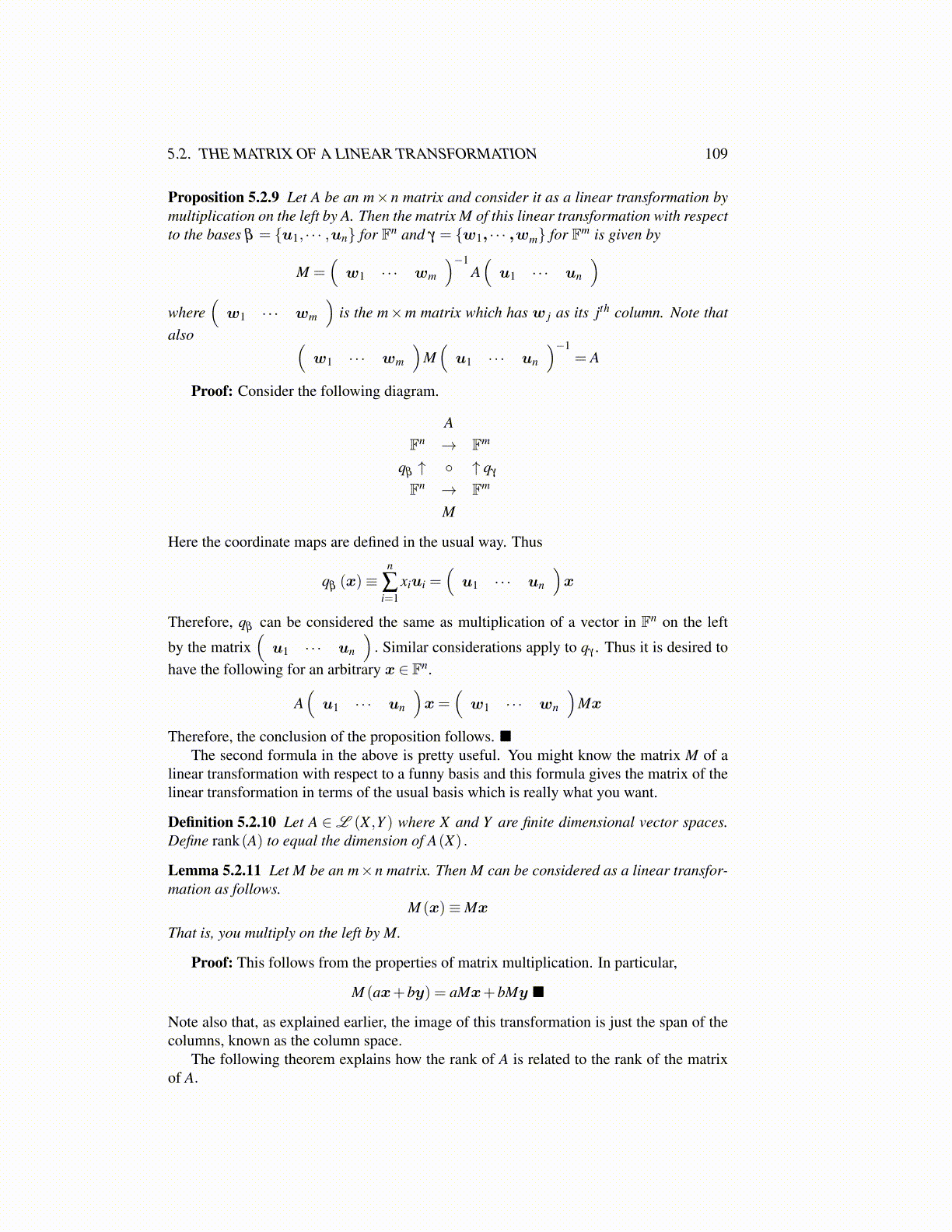
5.2. THE MATRIX OF A LINEAR TRANSFORMATION 109
Proposition 5.2.9 Let A be an m×n matrix and consider it as a linear transformation bymultiplication on the left by A. Then the matrix M of this linear transformation with respectto the bases β = {u1, · · · ,un} for Fn and γ = {w1, · · · ,wm} for Fm is given by
M =(
w1 · · · wm
)−1A(
u1 · · · un
)where
(w1 · · · wm
)is the m×m matrix which has w j as its jth column. Note that
also (w1 · · · wm
)M(
u1 · · · un
)−1= A
Proof: Consider the following diagram.
AFn → Fm
qβ ↑ ◦ ↑ qγ
Fn → Fm
M
Here the coordinate maps are defined in the usual way. Thus
qβ (x)≡n
∑i=1
xiui =(
u1 · · · un
)x
Therefore, qβ can be considered the same as multiplication of a vector in Fn on the left
by the matrix(
u1 · · · un
). Similar considerations apply to qγ . Thus it is desired to
have the following for an arbitrary x ∈ Fn.
A(
u1 · · · un
)x=
(w1 · · · wn
)Mx
Therefore, the conclusion of the proposition follows. ■The second formula in the above is pretty useful. You might know the matrix M of a
linear transformation with respect to a funny basis and this formula gives the matrix of thelinear transformation in terms of the usual basis which is really what you want.
Definition 5.2.10 Let A ∈L (X ,Y ) where X and Y are finite dimensional vector spaces.Define rank(A) to equal the dimension of A(X) .
Lemma 5.2.11 Let M be an m×n matrix. Then M can be considered as a linear transfor-mation as follows.
M (x)≡Mx
That is, you multiply on the left by M.
Proof: This follows from the properties of matrix multiplication. In particular,
M (ax+by) = aMx+bMy ■
Note also that, as explained earlier, the image of this transformation is just the span of thecolumns, known as the column space.
The following theorem explains how the rank of A is related to the rank of the matrixof A.